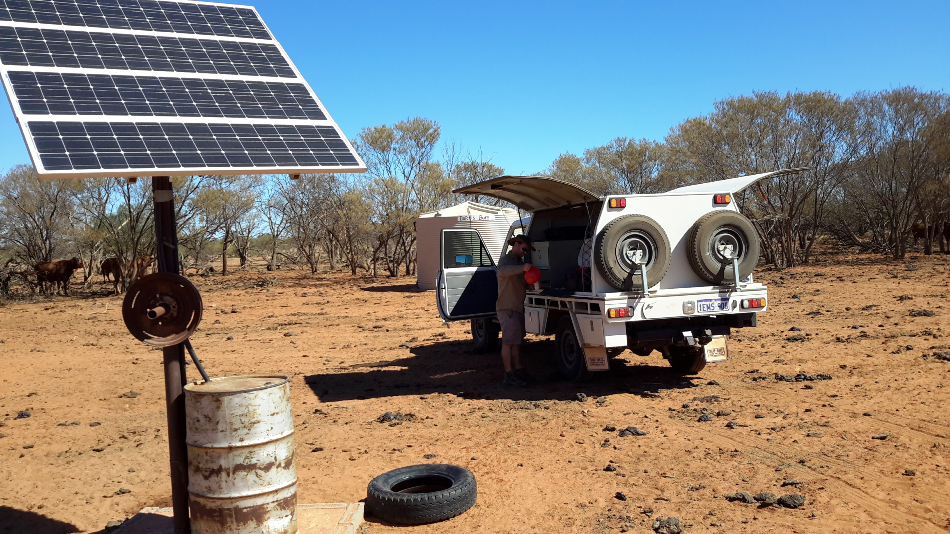May 20 2020
Mining companies could more accurately pinpoint reserves of valuable minerals using a new water-tasting approach developed by the national science agency, CSIRO, in research supported by the Minerals Research Institute of Western Australia (MRIWA).
 CSIRO research scientist Dr Nathan Reid taking field measurements on site.
CSIRO research scientist Dr Nathan Reid taking field measurements on site.
CSIRO researcher Dr Nathan Reid led a team of scientists analysing samples of groundwater from the Capricorn region in Western Australia, where layers of sediment and weathering are believed to hide potential ore deposits from view.
The researchers discovered broad 'haloes' of altered water chemistry around known deposits of gold, uranium, and other minerals where interaction with the ore systems had left distinctive traces in the water.
"Groundwater penetrates through covering sediments and interacts directly with the bedrock, dissolving trace amounts of the minerals present into solution," Dr Reid said.
"By sampling those waters, our instruments can essentially 'taste' the geology they have come into contact with.
"Where the underlying rocks contain a valuable ore deposit, the chemical flavour of that mineralisation extends much further than the concentrated mineralisation itself – just like a teaspoon of salt can make a whole glass of water taste salty."
These haloes of altered water chemistry could help geologists identify areas where other ore deposits might still lie hidden below the surface, helping to focus mineral exploration in the right areas.
Chemical anomalies identified in groundwater from sediment-covered areas of the study region have already stimulated further exploration investment from companies seeking to identify undiscovered mineral deposits.
MRIWA CEO Nicole Roocke welcomed the findings, published in MRIWA report M0436 today.
"The innovative work in this project by scientists across CSIRO, the Centre for Exploration Targeting and Curtin University will play an important role in encouraging mining industry investment in under-explored areas of Western Australia," Ms Roocke said.
"This work demonstrates the exciting mineral exploration potential remaining in the Capricorn, and we anticipate this innovative approach to mineral exploration will stimulate renewed interest in many similar areas of Western Australia where we know richly endowed geology lies buried below younger rocks.
"By supporting this fundamental research, the Western Australian Government is helping to provide the mineral exploration industry with the tools it needs to invest in identifying the next generation of ore deposits in this state."
The technical report summarising the findings of this research can be found at Distal Footprint of Giant Ore Systems: Capricorn WA Case Study.